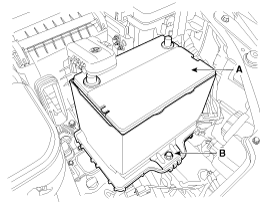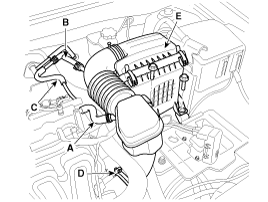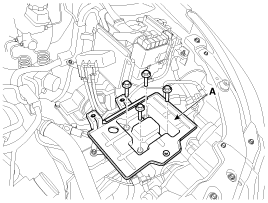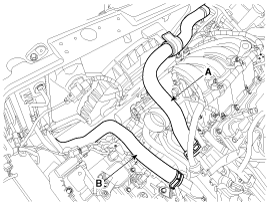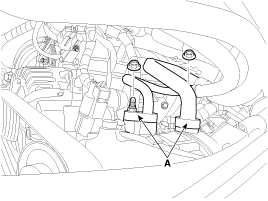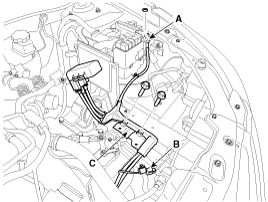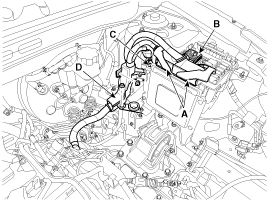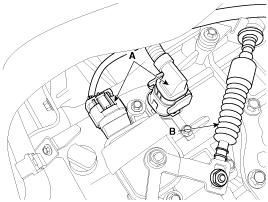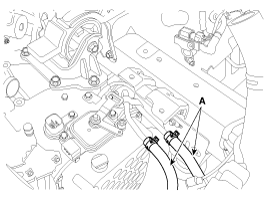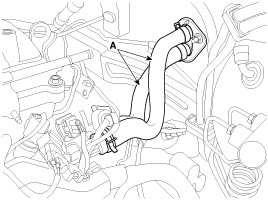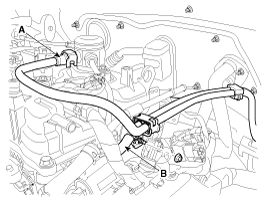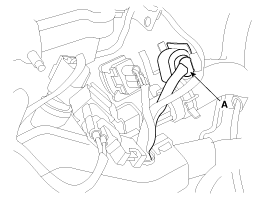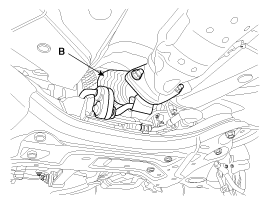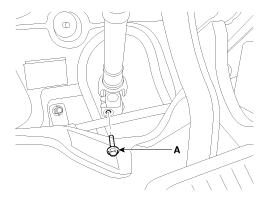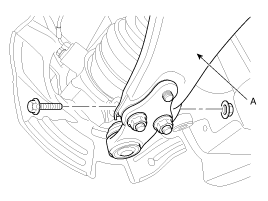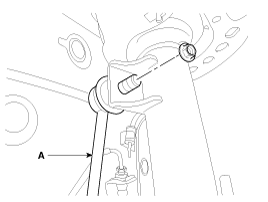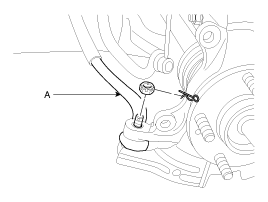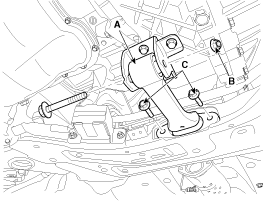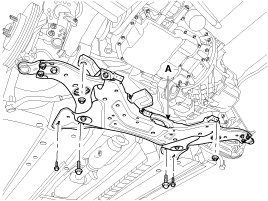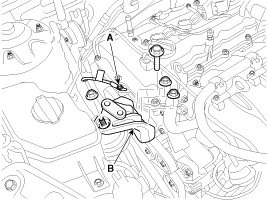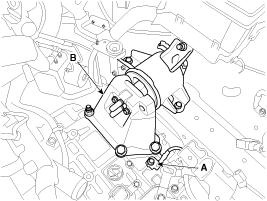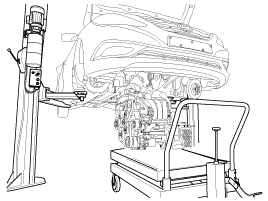 Hyundai Sonata: Repair procedures
Hyundai Sonata: Repair procedures
Removal
|
|
| 1. |
Remove the engine cover.
|
| 2. |
Disconnect the battery terminals (A).
|
| 3. |
Remove the air duct (B).
ąÉčĆąĖčéą╝ąĖčÅ čüąĄčĆą┤čåą░ ą╗ąĄč湥ąĮąĖąĄ ą╝ąĄč鹊ą┤čŗ ą╗ąĄč湥ąĮąĖčÅ ą░čĆąĖčéą╝ąĖąĖ.
|
| 4. |
Remove the battery (A) after removing the mounting
bracket (B).
|
| 5. |
Remove the air cleaner assembly.
|
| 6. |
Remove the battery tray (A).
|
| 7. |
Remove the under covers.
|
| 8. |
Loosen the drain plug, and drain the engine coolant.
Remove the radiator cap to drain with speed.
(Refer to Cooling system in this group)
|
| 9. |
Disconnect the radiator upper hose (A) and lower
hose (B).
|
| 10. |
Recover the refrigerant and then remove the high
pressure pipe and low pressure pipe (A).
(Refer to Air conditioning system in HA Group.)
|
| 11. |
Disconnect the (+) cable (A) from the fuse/relay
box and the front connector (B). Then remove the wiring protector (C).
|
| 12. |
Disconnect the ECM connectors (A) from the ECM, the
fuse box connector (B) from the fuse/relay box and the engine ground
line (C). Then remove the wiring protector (D).
|
| 13. |
Remove the transaxle wire harness connectors (A)
and control cable (B) from the transaxle.
(Refer to AT or MT group)
|
| 14. |
Disconnect the ATF cooler hoses (A).
|
| 15. |
Disconnect the heater hoses (A).
|
| 16. |
Disconnect the fuel hose (A) and PCSV (Purge control
solenoid valve) hose (B).
|
| 17. |
Remove the front muffler (B) after disconnecting
the front oxygen sensor connector (A) (ULEV only).
|
| 18. |
Remove the steering u-joint mounting bolt (A).
(Refer to ST group)
|
| 19. |
Remove the front wheels.
|
| 20. |
Remove the lower arms (A).
(Refer to SS group)
|
| 21. |
Remove the stabilizer bar links (A).
(Refer to SS group)
|
| 22. |
Remove the tie rod ends (A). (Refer to ST group)
|
| 23. |
Disconnect the drive shafts from the axle hubs.
(Refer to DS group)
|
| 24. |
Remove the roll rod bracket (A).
|
| 25. |
Support the sub frame (A) with a floor jack, and
then remove the sub frame mounting bolts and nuts.
|
| 26. |
Disconnect the ground line (A), and then remove the
engine mounting bracket (B).
|
| 27. |
Disconnect the ground line (A), and then remove the
transaxle mounting support bracket (B).
|
| 28. |
Remove the engine and transaxle assembly by lifting
vehicle.
|
Installation
| ŌĆó |
Adjust a shift cable.
|
| ŌĆó |
Refill engine with engine oil.
|
| ŌĆó |
Refill a transaxle with fluid.
|
| ŌĆó |
Refill a radiator and a reservoir tank with engine
coolant.
|
| ŌĆó |
Clean battery posts and cable terminals and assemble.
|
| ŌĆó |
Inspect for fuel leakage.
|
| - |
After assemble the fuel line, turn on the ignition
switch (do not operate the starter) so that the fuel pump runs for approximately
two seconds and fuel line pressurizes.
|
| - |
Repeat this operation two or three times, then check
for fuel leakage at any point in the fuel line.
|
| ŌĆó |
Bleed air from the cooling system.
|
| - |
Start engine and let it run until it warms up. (until
the radiator fan operates 3 or 4 times.)
|
| - |
Turn Off the engine. Check the level in the radiator,
add coolant if needed. This will allow trapped air to be removed from
the cooling system.
|
| - |
Put radiator cap on tightly, then run the engine
again and check for leaks.
|
 Engine Mounting. Components and Components Location
Engine Mounting. Components and Components Location
Components
1. Transaxle mounting bracket
2. Roll rod bracket
3. Sub frame
4. Engine mounting bracket
5. Engine mounting support bracket
...
 Timing System
Timing System
...
See also:
Canister Close Valve (CCV). Specifications
Specification
Item
Specification
Coil Resistance (Ω)
19.9 ~ 22.9 [20┬░C(68┬░F)
...
Rail Pressure Sensor (RPS). Repair procedures
Inspection
1.
Connect the GDS on the Data Link Connector (DLC).
2.
Measure the output voltage of the RPS at idle and various engine
speed. ...
Accelerator Position Sensor (APS). Description and Operation
Description
Accelerator Position Sensor (APS) is installed on the accelerator pedal
module and detects the rotation angle of the accelerator pedal. The APS is one
of the most important senso ...


